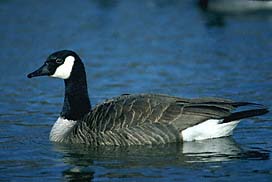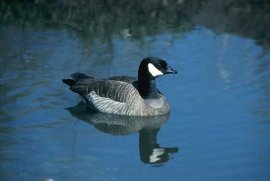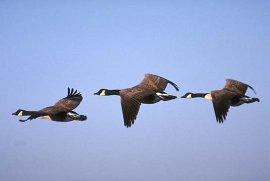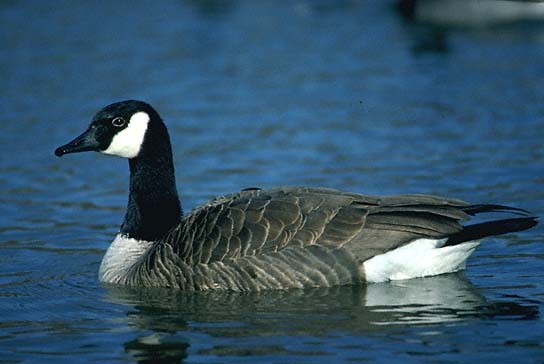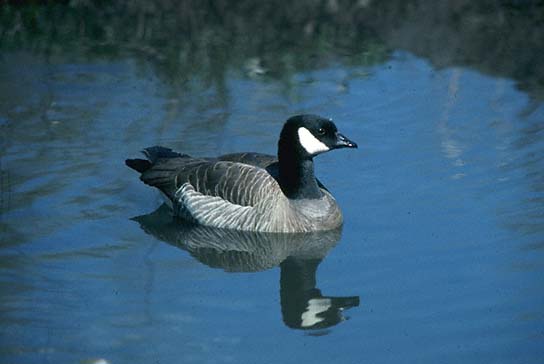Duck-like Birds
Description
Small races, 22-26" (56-66 cm); large races, 35-45" (89-114 cm). Brownish body with black head, long black neck, conspicuous white cheek patch. The smaller Brant has a shorter neck and lacks white cheek patch.
Voice
Rich musical honking in larger races; high-pitched cackling in smaller races.
Range
Breeds from Alaska east to Baffin Island and south to California, Illinois, and Massachusetts. Winters south to northern Mexico and Gulf Coast. Widespread as a semi-domesticated bird in city parks and on reservoirs.
Discussion
Well known for their V-shaped migrating flocks and rich, sonorous honking, Canada Geese are among the most familiar of North America's waterfowl. There are 11 geographical races, ranging in size from the "Giant Canada Goose" of the northern prairies to the diminutive "Cackling Goose," scarcely larger than the Mallard, which nests in the Yukon and winters mainly in California. The most abundant race is the one that nests south of Hudson Bay, which numbers well over a million, while the rarest is the Aleutian Islands form, which nests on only two small islands and numbers barely over a thousand. Like other geese, these birds are chiefly grazers, feeding on stubble fields and eating marsh vegetation. Increasingly tolerant of humans, some Canadas even nest in city parks and suburbs. They are especially noticeable in late summer and early fall, when they form molting flocks on golf courses and large lawns; at such times, they have come to be regarded as pests.

